What happened at Kent State on May 4, 1970? A look back at pivotal anti-war protest moment
- Oops!Something went wrong.Please try again later.
Pro-Palestinian protests have consumed college campuses across the country, with cries for a ceasefire in Gaza in hopes for a peaceful resolution to the Israel-Hamas war. These kinds of student-led demonstrations are nothing new - the history of campus protests stretch back decades, from the Civil Rights protests of the 1960s, to anti-Apartheid protests in the 1980s and the Black Lives Matter protests from the 2010s.
One particular protest that is forever etched in history happened in Kent a little over five decades ago as students demanded an end to the Vietnam War.
Saturday marks the 54th anniversary of the 1970 Kent State shootings, which saw the Ohio National Guard open fire on students, killing four and injuring nine.
Here is what we know about that day, including who was killed, what led to the shootings and some of the national reaction at the time.
What happened at Kent State University on May 4, 1970?
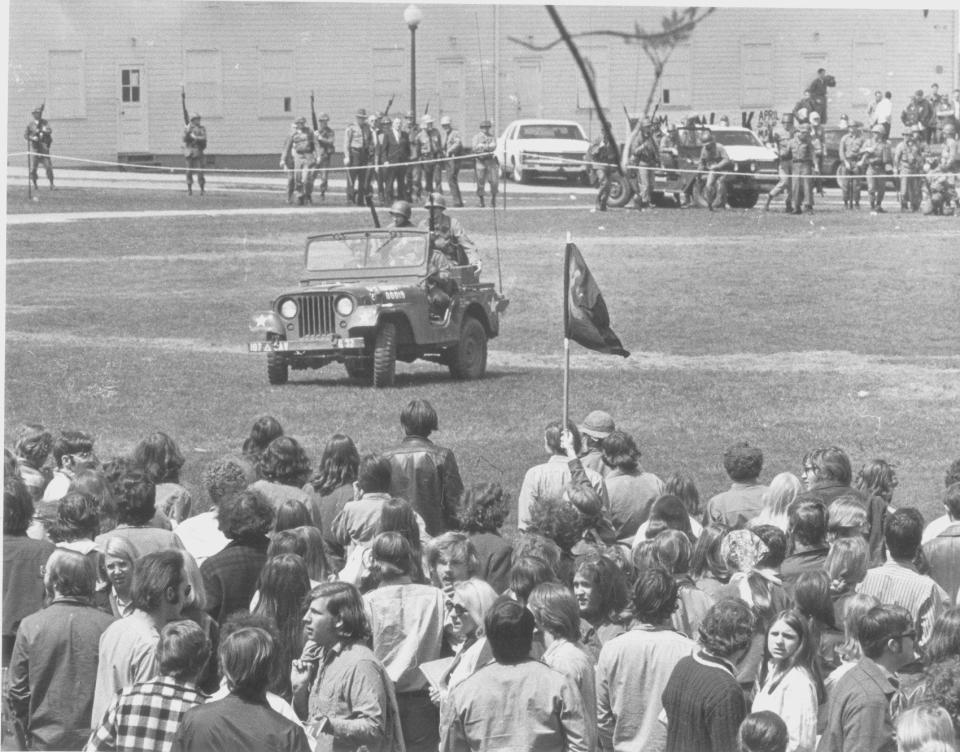
Kent State student protest leaders called for a May 4 rally at noon at the Commons on campus to further protest America's involvement in the Vietnam War, as well as the presence of National Guardsmen on campus. By noon that day, there was reported to be at least 3,000 people on the Commons, with 500 or so core protesters around the Victory Bell, and another 2,500 spectators standing around the perimeter.
Across the Commons stood about 100 National Guardsmen carrying M-1 military rifles, according to university archives. Shortly before noon, General Robert Canterbury, the highest ranking Ohio National Guardsmen, ordered the protesters to disperse. When that didn't happen, it's reported that guardsmen fired tear gas canisters into the crowd and began to march toward protesters at the Victory Bell.
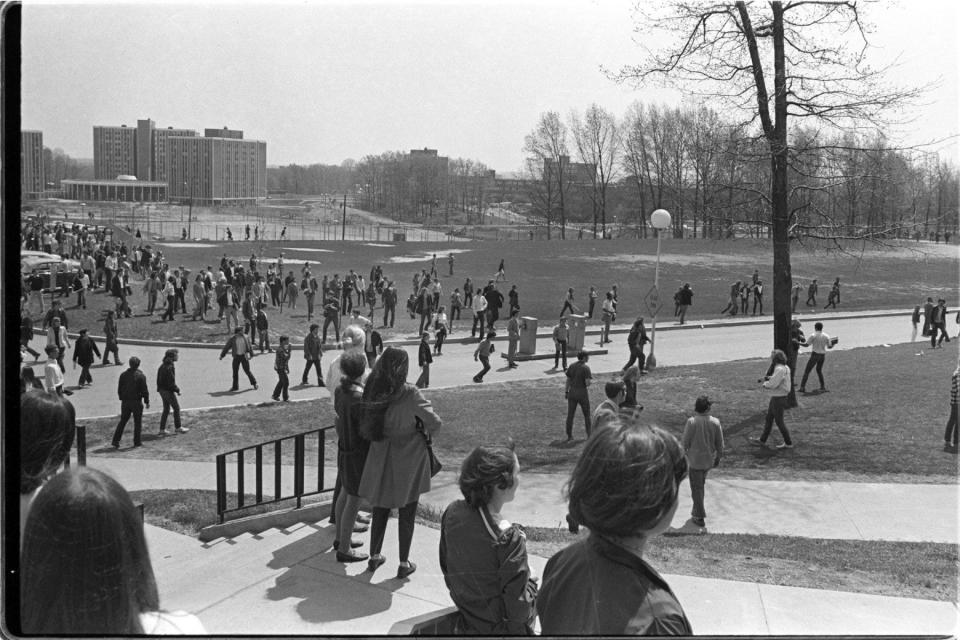
Protesters began to move back from the guardsmen and up a steep hill known as Blanket Hill, coming down onto a parking lot and a practice football field on the other side, archives say. Guardsmen followed the students onto the field and endured shouting and rock throwing for about 10 minutes, reportedly feeling trapped by the field's fencing.
The guardsmen subsequently retraced their steps back up Blanket Hill and once they got to the top, 28 guardsmen turned and fired towards the crowd.
Many of the guardsmen pointed their guns toward the ground or fired in the air, but it was reported that a few fired 60 to 67 shots into the crowd during a period of 13 seconds.
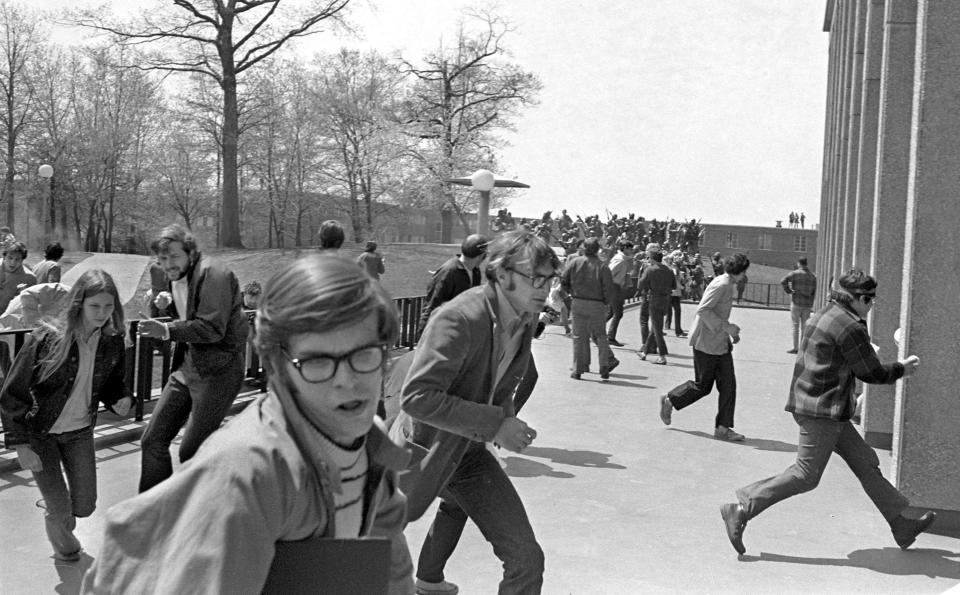
Who died at Kent State on May 4, 1970? Who was injured?
Four Kent State students standing as far as 390 feet away from the National Guardsmen were killed, and nine others were wounded. The four students who died were:
Jeffrey Miller - 20-year-old psychology student from Plainview, N.Y. - head wound
Allison Krause - 19-year-old honors college student from Pittsburgh, Penn. - chest wound
William Schroeder - 19-year-old psychology student from Lorain, Ohio - chest wound
Sandra Scheuer - 20-year-old speech and hearing therapy student from Youngstown, Ohio - neck wound
These are the nine students who were wounded as well as where they were shot:
Dean Kahler - back, permanently paralyzed from the chest down
Joseph Lewis - right abdomen and lower left leg
Thomas Grace - left ankle
John Cleary - upper left chest
Alan Canfora - right wrist
Douglas Wrentmore - right knee
James Russell - right thigh and right forehead
Robert Stamps - right buttock
Donald Mackenzie - neck
Kent State shootings explained: What happened at Kent State on May 4, 1970?
Why was the National Guard sent to Kent State?
The decision to bring the Ohio National Guard to Kent State can be traced back to President Richard Nixon's April 30, 1970, public address announcing America's recent invasion of Cambodia,. When Nixon was elected in 1968, he was elected in part because of his campaign promise to end American involvement in Vietnam. While the war seemed to be coming to an end, this April 1970 announcement began nation-wide protests the next day, including in Kent.
On Friday, May 1, 1970, protests began on Kent State's campus as well as in downtown Kent. A violent confrontation between local police and protesters led Kent Mayor Leroy Satrom to seek assistance from Ohio Gov. James Rhodes, according to archives. After meeting with Rhodes on Saturday, May 2, Satrom made the decision to ask Rhodes for help from the state's National Guard as he feared local police were no match for any further protests.
The National Guard eventually arrived in Kent later that evening, finding the ROTC building at Kent State engulfed in flames. More than 1,000 guardsmen occupied the campus on Sunday, May 3, with confrontations including tear gas, rock throwing and arrests occurring that evening.
Why did the National Guard shoot at Kent State students?
The eight guardsmen indicted in a 1974 federal criminal trial all testified that they shot because they feared for their lives, archives say. They believed the demonstrators were advancing on them in a way that caused them to believe their immediate safety was jeopardized. A 1975 federal civil trial also found that none of the eight guardsmen were legally responsible for the shootings.
The wounded students and the parents of the students who were killed were ultimately rewarded $675,000 in a financial settlement, which was paid for by the state of Ohio.
'Utter turmoil': Former National Guardsman reflects on Kent State tragedy of May 4, 1970
What was the aftermath of the Kent State shootings?
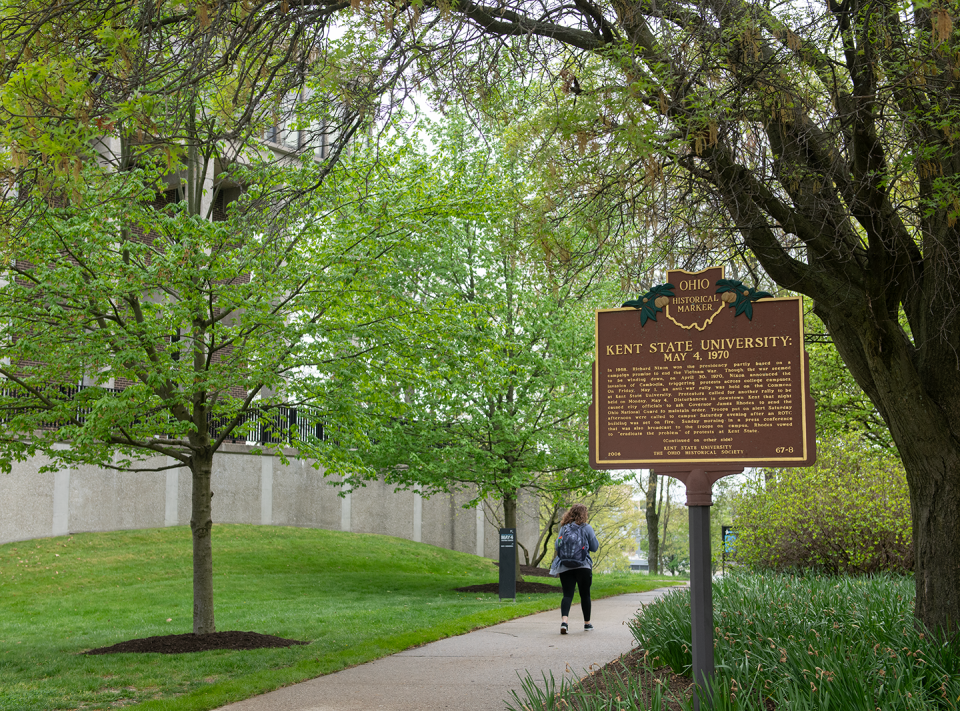
Immediately after the shooting, faculty members, led by geology professor Glenn Frank, pleaded with the protesters to not risk their lives confronting the guardsmen, who had just killed and wounded 13 students. Reportedly after about 20 minutes, the protesters finally left the Commons.
The university was closed for six weeks after the shootings; students had to meet with faculty members off campus to complete the semester.
The shootings influences further anti-Vietnam War protests across college campuses, as well as at the White House, where 100,000 people protested on May 9, 1970.
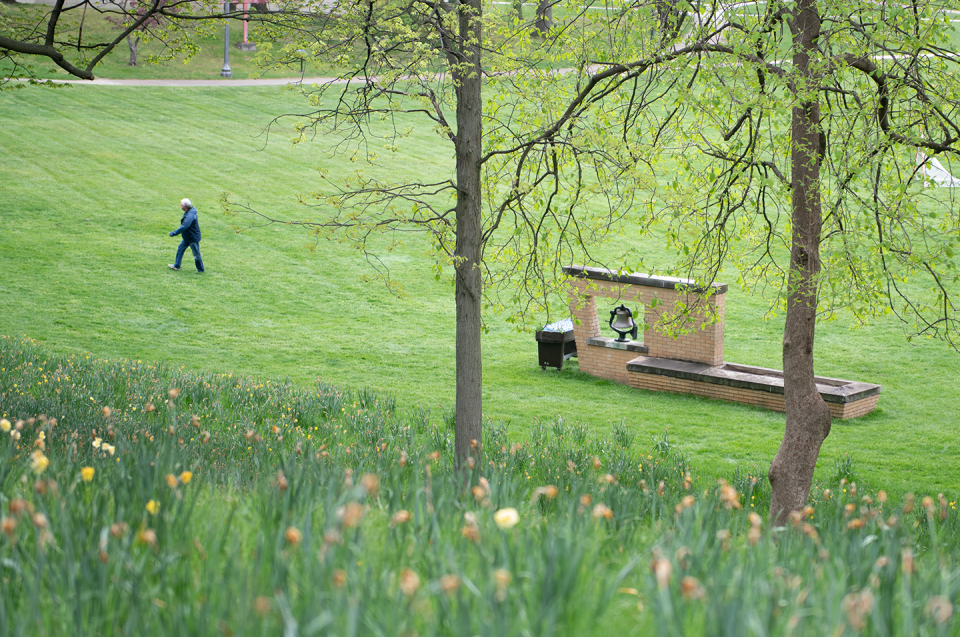
President Nixon created the President's Commission on Campus Unrest in June 1970 to take a look at the Kent State shootings. The report, published in September 1970, said that the shootings were "unnecessary, unwarranted and inexcusable."
On-campus memorials dedicated to the May 4 events have since been installed, including a plaque at the Prentiss Hall parking lot and a May 4 memorial that overlooks the Commons, designed by Bruno Ast.
Reporter Anthony Thompson can be reached at ajthompson@gannett.com, or on Twitter @athompsonABJ
This article originally appeared on Akron Beacon Journal: May 4 Kent State shootings happened 54 years ago. Look back in history

